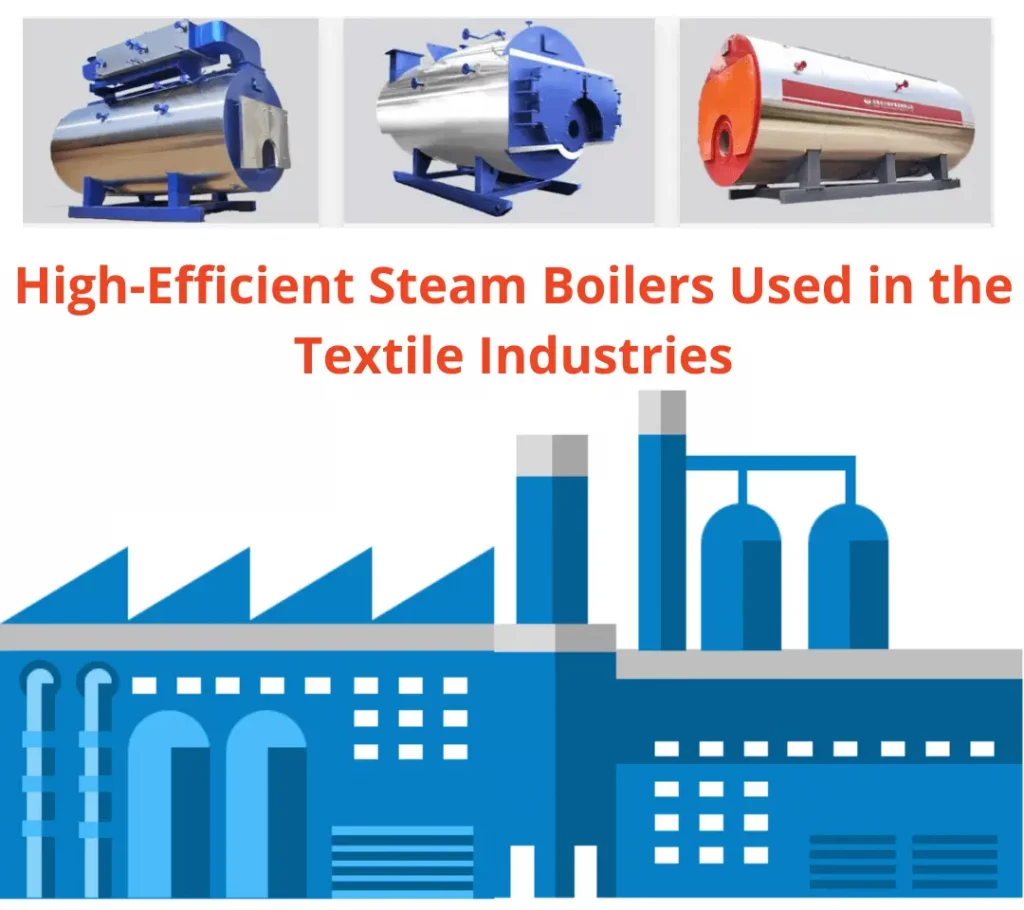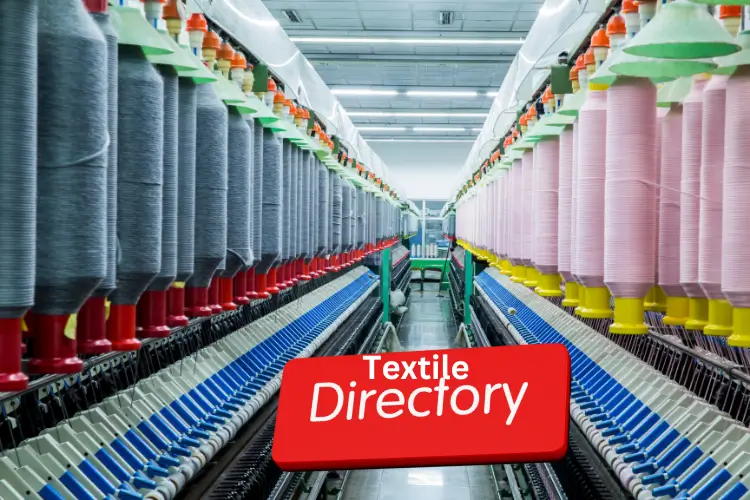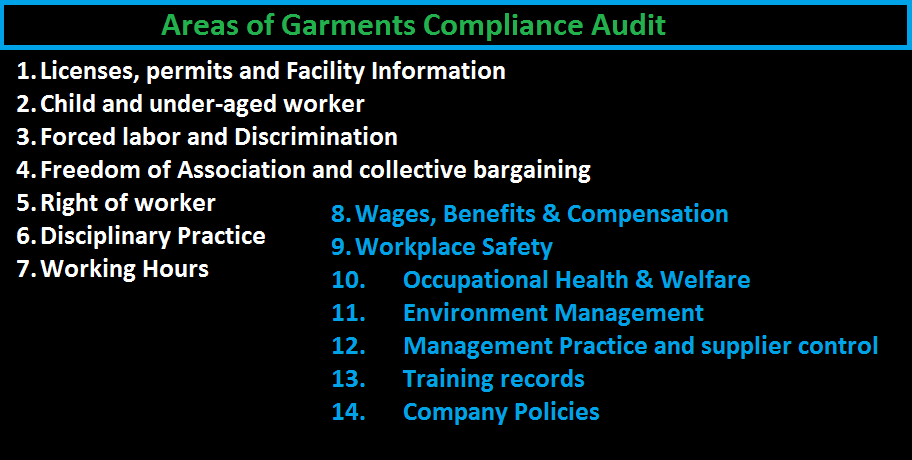In the textile industries, High-efficiency steam boilers can be very important. Not only do they heat water, but they can also heat steam. The textile industries need high-temperature steam in order to dye fabrics. The right type of steam boiler can provide these temperatures. This article will mainly focused on High-Efficient Steam Boilers Used in the Textile Industries .
Read on to learn more about the importance of High-efficiency steam boilers for the textile industry. Also, learn about the different types of textile boilers available.
What is High efficient steam boiler?
What is a high-efficiency steam boiler? It is a heating appliance that delivers heat through a series of plumbing pipes, rather than an HVAC system. Unlike conventional boilers, which are limited to using only water for heating, a high-efficiency steam boiler can use a wide range of fuels. The primary difference between a high-efficiency boiler and a condensing steam boiler is the secondary condensing area.
A steam boiler’s efficiency is largely determined by its own power demand. The higher the efficiency, the more power it requires to insert the feed water and produce the pressurized steam. But this is not the only way to measure the efficiency of a steam boiler.
Other factors must be considered, too. If it is equipped with a blower, the air may be too cold or too hot. In both cases, the higher the efficiency, the more energy it will need to produce the same amount of steam.
Why Do You Need A High-efficiency Steam Boiler?
The process of manufacturing fabrics requires steam heat to be produced. However, providing that steam can be a costly endeavor, depending on the type of boiler you use. Because of their large water reservoirs and fire-tube design, conventional boilers typically require many hours to produce steam from a cold start, making them uneconomical for textile companies.
Additionally, most textile manufacturing plants must run their boilers even when not in use, which adds to their water and fuel expenses.
The thermal efficiency of the boiler is crucial for textile manufacturing. The boiler must be able to meet the high demands of large-scale textile operations, as steam is a great carrier of heat. In addition to being an efficient carrier of heat, steam is sterile, making it ideal for processes used in the pharmaceutical, food, and health industries.
In addition to textile manufacturing, steam is also used in paper production, oil refineries, and rubber-curing. Many industries use steam as a method for sterilization, which makes it convenient for workers to use the same fluid for both heating the textiles and space heating.
Importance of High-efficiency steam boiler textile
Modern textile factories are increasingly relying on high-efficiency steam boilers to ensure that their operations are cost-effective. Steam and hot water are crucial for various processes in the textile industry, so selecting the right boiler for your textile business is essential. You will find the following factors to consider before making the purchase:
Efficiency: In a textile business, a continuous supply of steam and hot water is necessary to meet fluctuating needs. High-efficiency steam boilers from Rakhoh can help you meet these fluctuating needs while lowering your fuel costs and improving your efficiency.
In a textile plant, steam is produced in the form of vaporized water and has high heat energy. The heat from steam can be transferred to different processes, including dyeing.
Best High-efficiency steam boilers in the Textile
The textile industry relies on hot water and steam to complete various processes. Whether it is a small mill or a large one, choosing a suitable steam boiler system can be critical to the success of the industry.
Fortunately, there are several brands to choose from, so there are sure to be a model to suit your needs. However, before you make a decision, it is important to understand what exactly the textile industry requires from its steam boilers.
In addition to their high efficiency, steam boilers are often the perfect choice for textile industries. A WNS series oil or gas-fired steam boiler has many advantages, including an affordable furnace size. It also features low NOx emissions and high combustion strength.
The boiler itself is relatively easy to install and has quick-assembly features. The WNS boiler comes complete with a boiler proper, interconnecting flue, burner, water-to-steam system, and a metering system.
How to Select a High-efficiency Boiler for Textile
The first and most important step in selecting a steam boiler for the textile industry is to determine its heating needs. This is based on the heating load curve, which consists of heat loss in pipelines, the self-used heat of the boiler room, and the available waste heat.
The heating load curve can be calculated based on maximum thermal consumption per hour, or on a coefficient. Textile boilers typically use hot water or steam as their primary source of heat. Other features to look for in a textile boiler include its temperature and pressure.
A steam boiler is essential for the textile industry because this type of process requires large quantities of hot water and steam. This is necessary for many processes and is an essential part of the overall process.
Steam boilers are critical to textile manufacturing, and selecting the right type for your operation is crucial for maximizing efficiency and productivity.
Steam boilers are an important part of any industrial process, and the textile industry is no exception. In order to manufacture textiles in a high-efficiency manner, it’s important to have a reliable boiler system in place. At Fulton, we understand the importance of quality steam boilers and work hard to design and manufacture products that meet our customer’s needs.
If you’re looking for a high-efficiency boiler system for your textile factory, be sure to contact us today. We would be happy to discuss your specific needs and provide you with a quote for one of our top-of-the-line systems.



